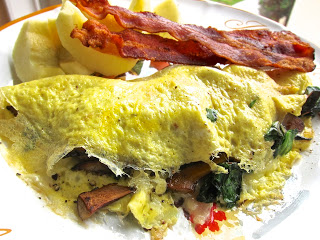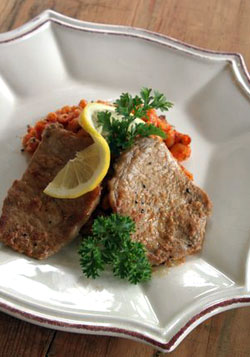 With Thanksgiving around the corner, my wife and I have started talking about the menu. Mostly we want to enjoy favorite dishes. One of those is a turkey liver pate I adapted from a chopped liver recipe my mom made when I was a kid.
With Thanksgiving around the corner, my wife and I have started talking about the menu. Mostly we want to enjoy favorite dishes. One of those is a turkey liver pate I adapted from a chopped liver recipe my mom made when I was a kid.
Even people who love chicken livers view turkey liver as too much of a good thing. Whoever has the job of prepping the turkey on Thanksgiving Day frequently looks with bewilderment at the large double-lobed liver in the bag tucked ever so neatly inside the turkey.
Following my mother's lead, my solution is to turn lemons into lemonade or, in this case, turkey liver into pâté. My mother prepared chopped liver using a shallow wooden bowl and a beat-up, double-handled, single-bladed mezzaluna knife that her mother had given her.
She would cut up and sauté the turkey liver with a chopped up onion. Two eggs would go into boiling water. Once hard-boiled, they would join the sautéed liver and onion in the wooden bowl, which she would hand to me along with the mezzaluna. While she prepared the turkey, she put me to work.

 I love beans. There I said it. I mean, don't you love them too? Beans can stretch any meal far beyond the usual menu ideas. There are countless sauces and toppings that can be incorporated with beans and served over rice and pasta. Let's not mention the affordability of this very fine staple.
I love beans. There I said it. I mean, don't you love them too? Beans can stretch any meal far beyond the usual menu ideas. There are countless sauces and toppings that can be incorporated with beans and served over rice and pasta. Let's not mention the affordability of this very fine staple. Leave it to my grandmother’s generation to have a delicious dessert with gelatin. A standby ingredient of the “greatest generation,” gelatin is often forgotten these days. Yet, this one ingredient provides a fantastic texture and appearance for dessert dishes. Strawberry Charlotte Russe is an “oldie but goodie,” for its name is derivative of Russian royalty and French culinary prowess.
Leave it to my grandmother’s generation to have a delicious dessert with gelatin. A standby ingredient of the “greatest generation,” gelatin is often forgotten these days. Yet, this one ingredient provides a fantastic texture and appearance for dessert dishes. Strawberry Charlotte Russe is an “oldie but goodie,” for its name is derivative of Russian royalty and French culinary prowess. As with many good things, a cherished recipe resulted from an accident.
As with many good things, a cherished recipe resulted from an accident. Technically defined as “thin cuts of meat, sautéed and cooked in a rich sauce,” the scaloppini fashion for cooking pork, chicken, and veal is simple and elegant. In the midst of my stew, soup and comfort food wintertime phase, I ere toward the side of something fresh and light in betwixt the heaviness comfort food affords. Enter my Skinny Pork Chop Scaloppini.
Technically defined as “thin cuts of meat, sautéed and cooked in a rich sauce,” the scaloppini fashion for cooking pork, chicken, and veal is simple and elegant. In the midst of my stew, soup and comfort food wintertime phase, I ere toward the side of something fresh and light in betwixt the heaviness comfort food affords. Enter my Skinny Pork Chop Scaloppini.
